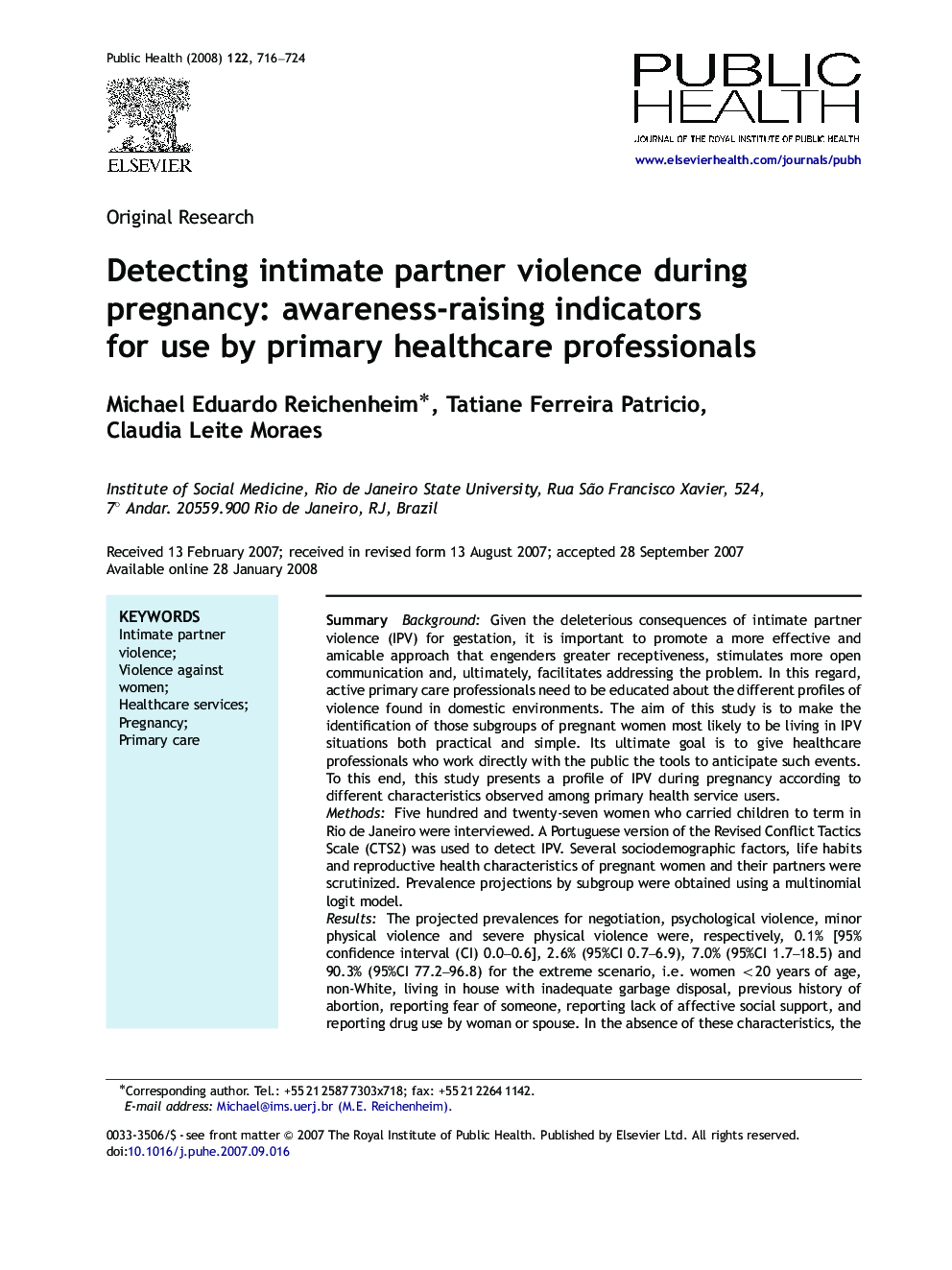| Article ID | Journal | Published Year | Pages | File Type |
|---|---|---|---|---|
| 1088213 | Public Health | 2008 | 9 Pages |
SummaryBackgroundGiven the deleterious consequences of intimate partner violence (IPV) for gestation, it is important to promote a more effective and amicable approach that engenders greater receptiveness, stimulates more open communication and, ultimately, facilitates addressing the problem. In this regard, active primary care professionals need to be educated about the different profiles of violence found in domestic environments. The aim of this study is to make the identification of those subgroups of pregnant women most likely to be living in IPV situations both practical and simple. Its ultimate goal is to give healthcare professionals who work directly with the public the tools to anticipate such events. To this end, this study presents a profile of IPV during pregnancy according to different characteristics observed among primary health service users.MethodsFive hundred and twenty-seven women who carried children to term in Rio de Janeiro were interviewed. A Portuguese version of the Revised Conflict Tactics Scale (CTS2) was used to detect IPV. Several sociodemographic factors, life habits and reproductive health characteristics of pregnant women and their partners were scrutinized. Prevalence projections by subgroup were obtained using a multinomial logit model.ResultsThe projected prevalences for negotiation, psychological violence, minor physical violence and severe physical violence were, respectively, 0.1% [95% confidence interval (CI) 0.0–0.6], 2.6% (95%CI 0.7–6.9), 7.0% (95%CI 1.7–18.5) and 90.3% (95%CI 77.2–96.8) for the extreme scenario, i.e. women <20 years of age, non-White, living in house with inadequate garbage disposal, previous history of abortion, reporting fear of someone, reporting lack of affective social support, and reporting drug use by woman or spouse. In the absence of these characteristics, the projected prevalences were 51.3% (95%CI 38.5–64.6), 40.0% (95%CI 28.5–51.9), 7.6% (95%CI 4.2–12.7) and 1.1% (95%CI 0.3–2.4), respectively.ConclusionThis study found that knowledge of certain characteristics of pregnant women who attend health services can alert professionals to the high probability of IPV, facilitating early identification of the problem and subsequent implementation of proactive measures.
